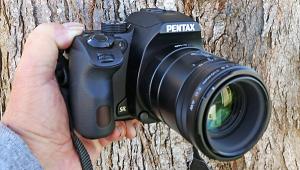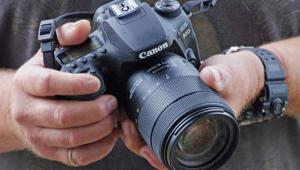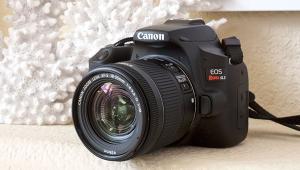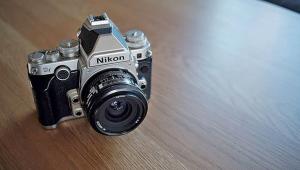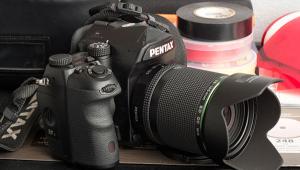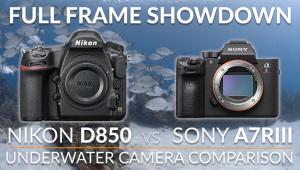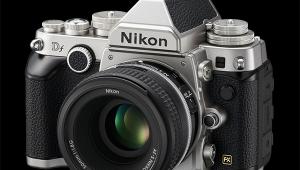Nikon D4S DSLR Review
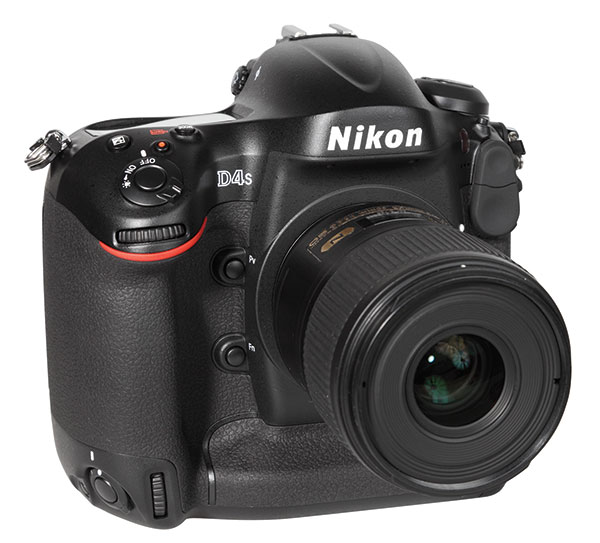
The Nikon D4S is a professional SLR system for sports and action photography. It has a full-frame sensor (36x23.9mm) that Nikon calls the “FX” format. In combination with the new EXPEED 4 image processing system, the new sensor offers an extended ISO speed range: the “native” range is between ISO 100 and 25,600, with an additional high mode equivalent of ISO 409,600 (!). The noise results are impressive in the native ISO range, while images with ISO 102,400 and ISO 204,800 show nearly the same noise artifacts as APS-C cameras in the ISO 12,800 to ISO 25,600 range.


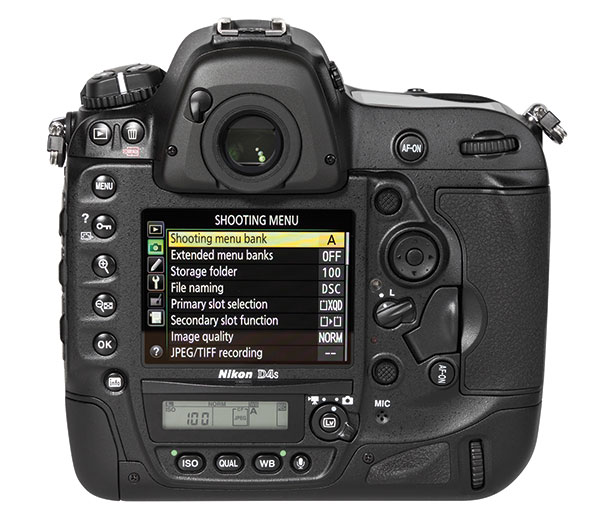
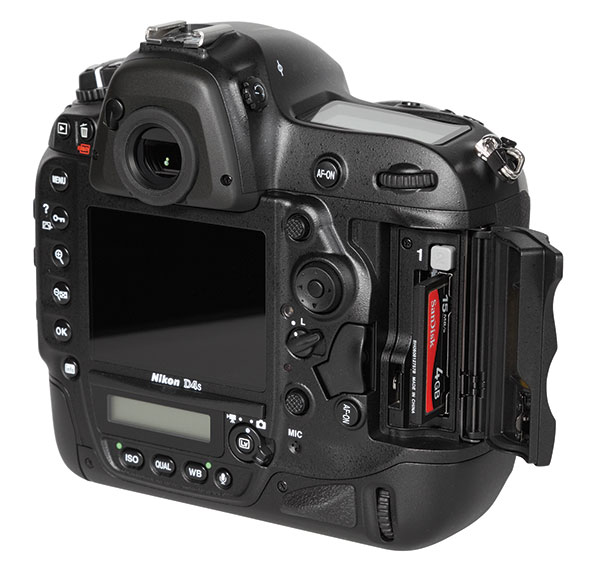
The camera offers 16MP resolution and delivers very sharp images: see the details in our “Sharpness” comments on page 40. It offers a lot of individual settings and additional functions. The image styles are widely configurable; indeed, every function and button seems to be configurable as witnessed by the nearly 50 pages of the manual dedicated to settings in the camera menu.
While the camera allows interval shooting, multiple exposure shots, and more, perhaps the most important aspect of the new camera is its speed. The D4S allows the user to take up to 11 frames per second (fps) with the activated AF system in continuous shooting mode. In our tests, the D4S achieved this speed with ease. In JPEG mode and using a fast storage card, the image burst isn’t restricted—we shot a series with up to 100 images without any problems. The camera worked well with the very fast XQD cards and with CF cards. Lower burst rate settings in continuous are available and, of course, are configurable in the image menu. The image modes (single shot, continuous mode, self-timer, and more) are chosen with the small ring below the function buttons on the upper left.
We took a test series with very fast-moving objects (cars on the street), which the Nikon D4S kept perfectly in focus. The focus system uses 51 AF sensors (15 cross-type sensors) and is also highly configurable. It showed a perfect performance even in low-light conditions.
The camera has a lot of function buttons, dials, joysticks, and more. As a professional system it offers two setup dials (one near the shutter release button, one on the back) and has an additional version of this button/dial set for shots in portrait mode (camera turned by 90 degrees) on the lower right of the body. In addition, it offers two joysticks (one for landscape shots, one for portrait shots).
The camera has three LCD screens: 1) the large status LCD on the top shows all important image parameters; 2) the black-and-white LCD screen on the back allows users to change image parameters like ISO or WB quickly without using the menu; and 3) the color LCD on the back. This color screen is very large (3.2 inches/8cm) and has a 3:2 aspect ratio, which allows users to see the taken image without black borders on the top or bottom. The screen is fixed. Nikon’s decision to offer an absolutely robust and massive camera, based on magnesium alloy, is the reason for the missing swivel mechanism. In addition, the body is well protected against dust, humidity, and rain.

Comments On Still Image Quality
Color: The camera reproduced the test box shot with neutral and realistic looking colors, albeit with a somewhat cooler look. These colors are a confirmation of the results of the test chart image: gray nuances are shifted a bit into the bluish area and the lightest gray and white pattern tends into the green and yellowish areas. The colors are a bit oversaturated (106.8 percent), but basically this high average saturation is a consequence of the very highly saturated blue colors, which have a very high magenta rate. The boosted blue nuances are visible in our standard test box shot (blue spool in the upper right or blue pattern of the Kodak chart).
Skin tones are reproduced very naturally. The delicate gradients in skin areas are shown without banding effects or color shifts (shift of darker skin areas into greenish nuances, for example).

Sharpness: The resolution results of the Nikon D4S are excellent. The resolution of 3280 lines per picture height given by the image sensor is transferred into images with a maximum of 3258 lines per picture height. In part, this is a result of an intense sharpness filtering which seems to be a little higher than in some other Nikon D-SLRs and causes a clipping effect on hard contrast lines. This effect isn’t visible in real-life images like the portrait shot but can be seen in some elements of the test box shot. Nevertheless, details and fine structures in these images look very crisp, but still natural.
Noise: The noise results of the Nikon D4S are excellent. The camera shows nearly no luminance noise artifacts (y-factor is way below 1.0 percent in ISO speed settings up to 12,800 and exactly crosses the 1.0 percent line at ISO 25,600). The images have a very clean and silky-smooth look. The color noise is filtered by the EXPEED 4 image processor, which creates images with the look of analog film grain (ISO 12,800 and ISO 25,600). That’s a little surprising because the result charts show wide differences between the RGB graphs in “Pixel noise,” especially in low ISO speed settings (which normally is a hint about higher color noise effects).

The new Nikon D4S also showed a good performance in the dynamic range tests. It achieved a maximum of 11.6 f/stops at ISO 100 and keeps a high level of more than 10 f/stops in higher speed settings. Using different picture styles with a more flattened gamma curve (or using Raw mode with a flattened gamma setting) somewhat higher results can be achieved.
Comments On Video Functions
The camera is able to record Full HD video with 1920x1080 pixels. It offers a lot of different frame rates with a maximum of 60 progressive frames per second. Just like in photo mode, it allows the user to shoot a cropped version (DX format) of videos, which can be helpful in terms of “adding” focal length to mounted FX lenses.
Besides high frame rates it offers all standard frame rates for NTSC and PAL videos (29.97 fps, 25 fps, 24p mode for Blu-ray compatible videos, etc.). The D4S uses the Apple QuickTime MOV file format with H.264/MP4 compression to record its movies in a standard format which is compatible with nearly all player and editing software.
The camera allows for use of manual exposure settings in video mode, with ISO speed settings allowed up to ISO 25,600. Aperture and shutter speed can be set up by the videographer. For sound recording it offers a built-in mono microphone. Nikon offers an additional stereo microphone as an option. Due to the 3.5mm standard jack, many other microphones with a 3.5mm interface cable can be used. A second 3.5mm jack allows for use of earphones for direct sound control. This is very helpful because the camera allows for manual set up of the sound recording level. The camera offers additional sound control with its “frequency response” function. It can be set up to “wide range” or “vocal range” and yields better sound quality in interview sessions.
Comments On Video Quality
The video quality is very good. The Nikon D4S reproduced the ISO 12.233 chart with 628 lines per picture height (1080p mode), which is a good result. The videos look smooth and natural, although hard contrast lines are overemphasized, which may cause some problems. To prevent this effect the user can optimize the video look in the “Set Picture Control” menu. Nevertheless, movies taken with the Nikon D4S are nearly free of moiré effects.
The colors in the D4S videos are fine: just like in still photos the blue nuances are highly saturated, but all other colors look very natural. The noise results in videos are very good. The camera showed very smooth and clean images: the luminance noise results are on an extremely low level—below 0.3 percent up to ISO 3200.
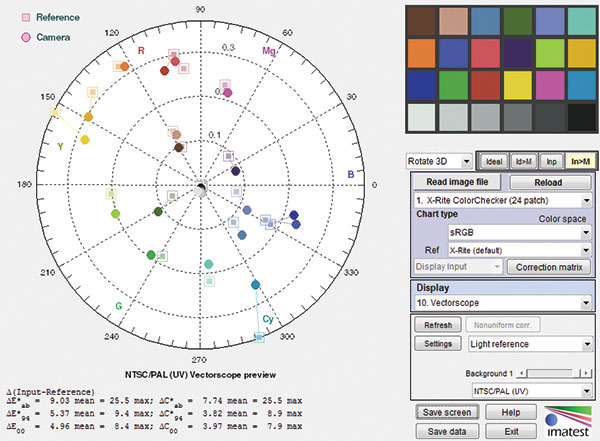
Scorecard
Pro
+ Very fast SLR system
+ Fast and reliable AF system, works fine even in high-speed continuous mode
+ High-quality images due to high resolution and realistic color reproduction
+ Many setup dials, function buttons, additional shutter release button (for portrait shots) that allow professional handling and operation of the camera
+ Full HD video capabilities (a lot of manual settings, frame rates)
Con
- Missing WLAN function (external WLAN system available)
- Missing GPS system (external GPS system available)
- Missing swivel monitor (would be helpful especially for video function)
Lab results and test images by BetterNet, our TIPA-affiliated testing lab. Edited by George Schaub.
The Nikon D4S (body only) has a list price of $6499.95. For more information, please visit www.nikonusa.com.

